Where Can We Find Asteroids and Comets?
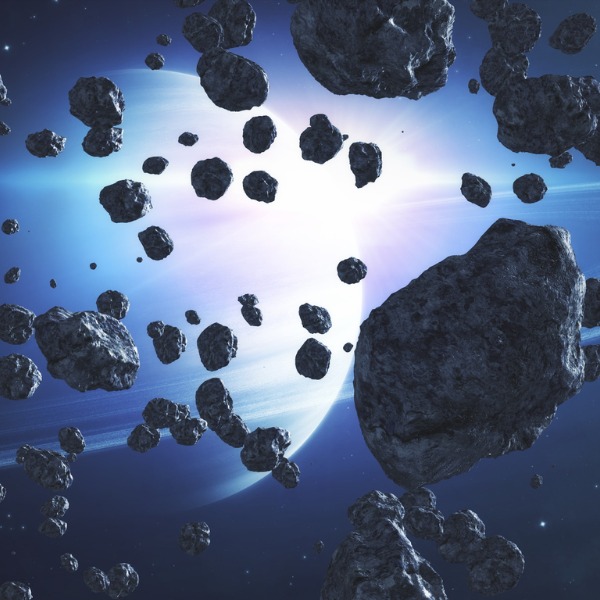
Asteroids (Alexandr_Zharikov, iStockphoto)

Asteroids (Alexandr_Zharikov, iStockphoto)
How does this align with my curriculum?
This backgrounder explains the difference between planets, dwarf planets and small solar system bodies, such as asteroids and comets.
The objects that make up our solar system can be classified into three main groups: planets, dwarf planets and small solar system bodies.
- Planets are spherical, orbit around the Sun and have cleared the neighbourhood around their orbits of other smaller bodies.
- Dwarf planets are mostly spherical, orbit around the Sun and have not cleared the neighbourhood around their orbits. In 2006, Ceres was promoted from asteroid to “dwarf planet” status and Pluto was demoted from planet to dwarf planet.
- Small Solar System Bodies (SSSBs) include any other objects that orbit around our Sun, but do not fit into either of the first two categories. This group includes:
- asteroids- which are made of carbon, rock or metal;
- meteoroids - any rock smaller than 1m in diameter; and
- comets - which are made of ice and dust.
What is an asteroid?
Asteroids are leftover material from the early Solar System that never came together to form a planet. There are three main types of asteroids:
- The C-group. These asteroids are dark-coloured and rich in carbon. Around 75% of all asteroids in our solar system are in this group.
- The S-group. These asteroids are stony and moderately bright. About 15% of asteroids are in this group.
- The M-group. These asteroids tend to be made of metals. The remaining asteroids tend to be in this group.
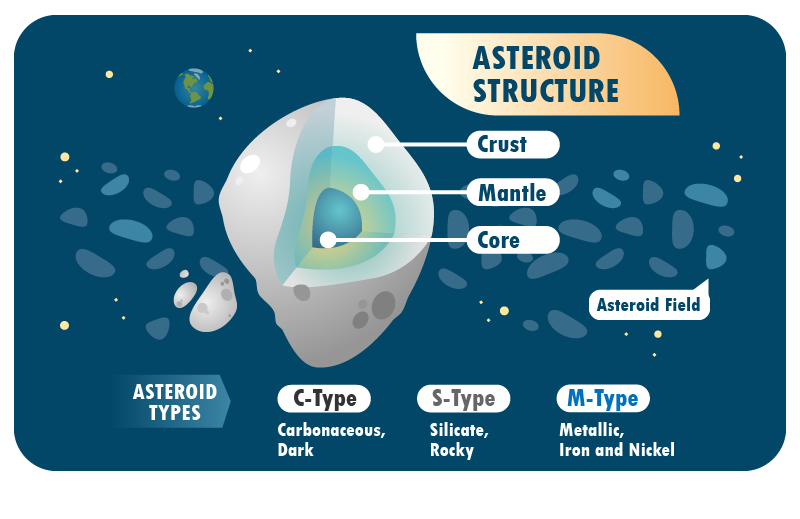
Where do we find asteroids?
The Main Asteroid Belt is a region of our solar system located roughly between the orbits of the planets Mars and Jupiter. Main belt asteroids have orbits around the Sun that are not easily altered. The largest object in this belt is Ceres. It used to be called an asteroid. But it is now classified as a dwarf planet due to its size and mostly spherical shape. Ceres is the only dwarf planet in the inner Solar System.
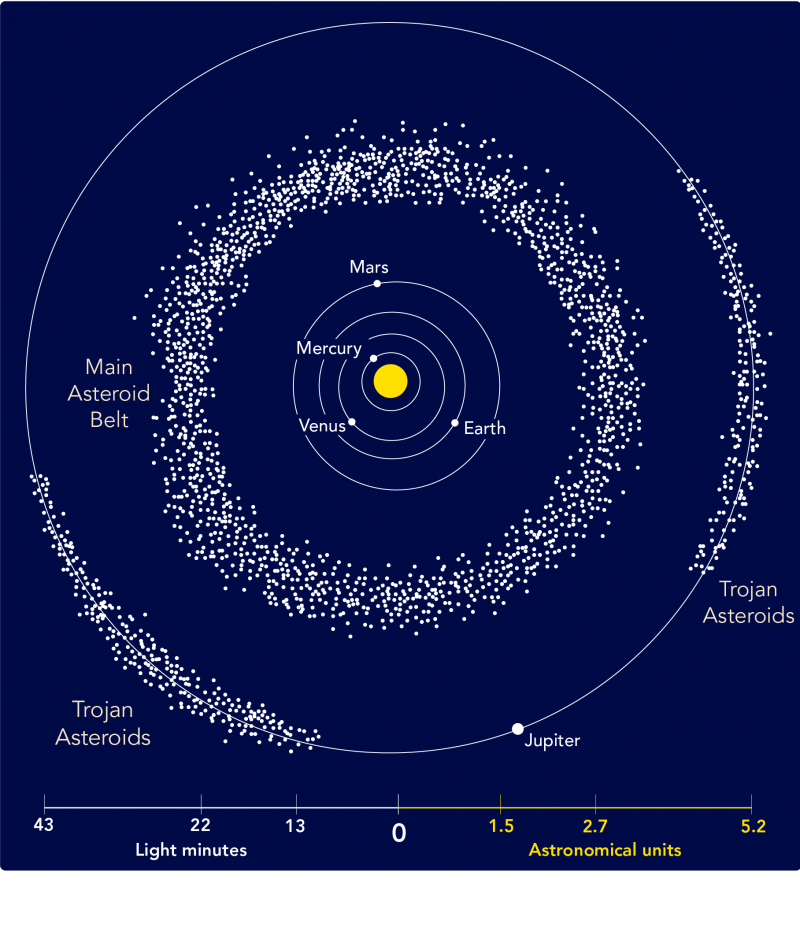
What are Near-Earth Asteroids?
Asteroids can sometimes escape the Main Asteroid Belt. They can get close enough to Earth to cross the Earth’s orbital path. These asteroids are termed Near-Earth Asteroids (NEAs). NEAs come within 0.3 AU (astronomical units) of the Earth's orbit. An astronomical unit is the distance from the Earth to the Sun - 1.495979 × 108 km. Near-Earth asteroids are divided into four groups:
- The Amor group. Members of the Amor group pass close to the Earth’s orbit, but never cross it.
- The Apollo group. Members of the Apollo group cross Earth’s orbit, but spend most of their time outside the orbit of the Earth.
- The Aten group. Members of the Aten group also cross the Earth’s orbit, but spend most of their time inside the orbit of the Earth; and
- The Atiras or ‘interior-to-Earth’s orbit’ (IEOs). Members of the ‘interior-to-Earth’s orbit’ asteroids (IEOs) spend all of their time inside the orbit of the Earth (they do not cross Earth’s orbit).

The near-Earth asteroids that cross the Earth’s orbit are called Apollos and Atens. They pose the greatest threat to our planet. Near-Earth asteroids are also of particular interest to astronauts because they can be reached by spacecraft. A mission to a near-Earth asteroid is much more energy-efficient than a trip to the Main Asteroid Belt. To date, three near-Earth asteroids, including the asteroid Eros, have been visited by spacecraft.
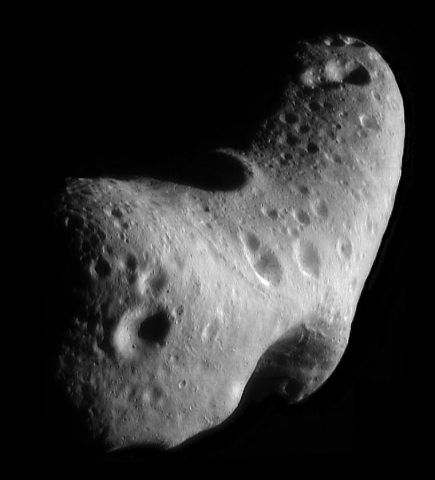
What asteroids orbit other planets?
Some asteroids have been found to orbit planets, or are in the same orbital path as a planet. These asteroids are called Trojan Asteroids (or Trojans). Trojans do not collide with the planets they orbit. They are located in stability zones called Lagrangian Points, so are always ahead of or behind the planet as it orbits around the Sun. Scientists believe that Trojans have been locked in their orbits since early in the formation of the Solar System. By early 2017, more than 6 500 Trojans had been spotted. Most of these were around Jupiter. Scientists think that there are actually more than a million Jupiter Trojans larger than one kilometre! Other Trojans that have been spotted include nine near Mars, 22 near Neptune, two near Uranus, and one Earth Trojan. The Earth Trojan is temporarily called 2010 TK7.
What are Trans-Neptunian Objects?
Beyond the Main Asteroid Belt, there are objects that have a greater average distance from the Sun than the planet Neptune. These are called Trans-Neptunian Objects (TNOs). Objects in the Main Asteroid Belt are composed primarily of rock and metal. In contrast, TNOs are icy and composed mainly of frozen methane, ammonia and water. There are three main regions of trans-Neptunian space:
- the Kuiper Belt;
- The Scattered Disk; and
- the Oort Cloud.
The Kuiper Belt is similar to the Main Asteroid Belt. However, it is much larger. It is 20 times as wide and contains between 20 and 200 times as much material. It is mainly composed of small bodies which are left over from the Solar System’s formation. It is home to at least three dwarf planets – Pluto, Makemake and Haumea.
Objects in the Kuiper Belt have stable orbits. This means that they are not easily disturbed and will remain in their orbits over very long periods of time.
The Scattered Disc
Objects in the Scattered Disc are from 35 to 100 AU (approximately 5.2 billion km to 15 billion km) from the Sun. Unlike objects in the Kuiper Belt, they have unstable orbits which are easily disturbed by the gravity of Neptune. Objects in this region frequently get scattered around in the outer solar system. Sometimes, they cross into the inner solar system. Eris, the largest of the dwarf planets, is a Scattered Disc object.
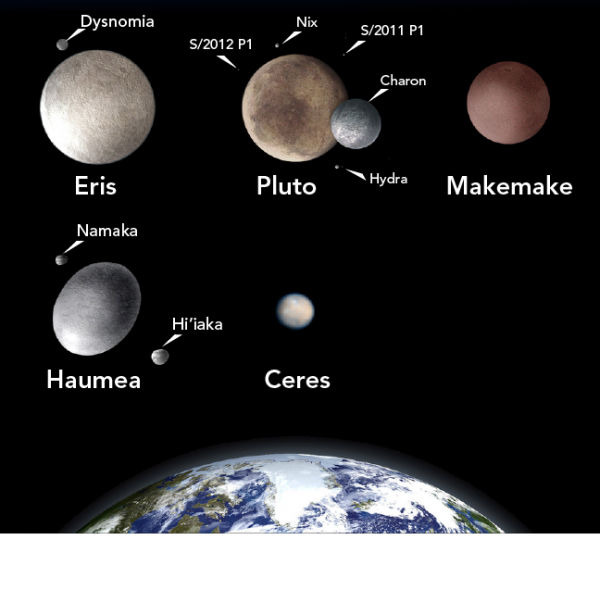
The Oort Cloud
Beyond the Kuiper Belt and Scattered Disk is a region called the Oort Cloud. The Oort Cloud contains hundreds of billions of comets. Unlike asteroids, when comets get into the inner solar system they appear to have a tail. The tail occurs because when the comet gets close enough to the Sun, the Sun melts part of the ice. The bright tail of melted ice and dust always points away from the Sun because of a stream of plasma and particles called the solar wind.
Comets that come from the Oort Cloud are known as long-period comets. That’s because they take over 200 years to orbit the Sun! There are also short-period comets, such as Halley’s Comet that orbits the Sun every 76 years. Astronomers think short-period comets come from the Scattered Disc.

Astronomers are still discovering new comets. For example, the comet Hale-Bopp was first seen by two astronomers (Hale and Bopp) in 1995!
Thank you to the Let’s Talk Science Challenge volunteer writers who provided content for this backgrounder.
References
Atkinson, N. (2015, June 3). The difference between asteroids and meteorites. Phys.org.
International Astronomical Union: Minor Planet Center. (n.d.). Trojan minor planets.
NASA. (n.d.). Near Earth object program.
NASA.(2018, November 16). Asteroids.